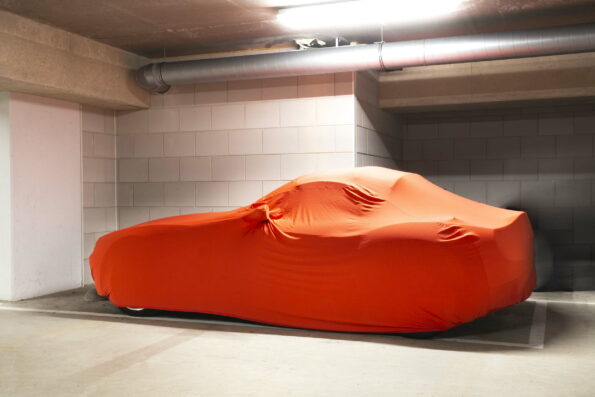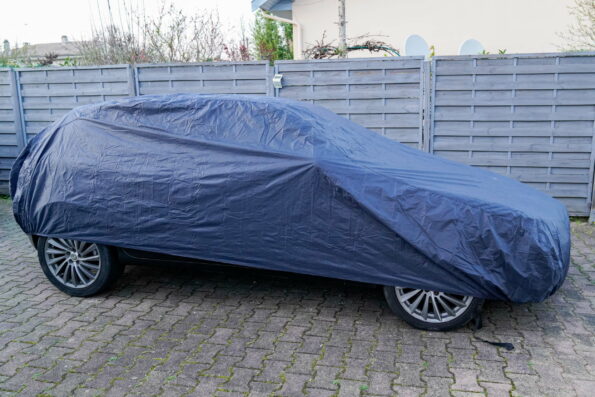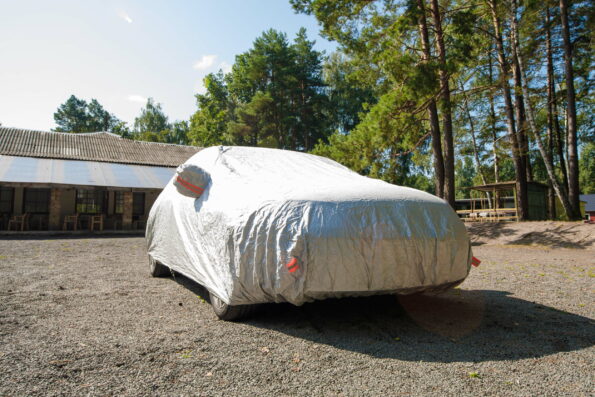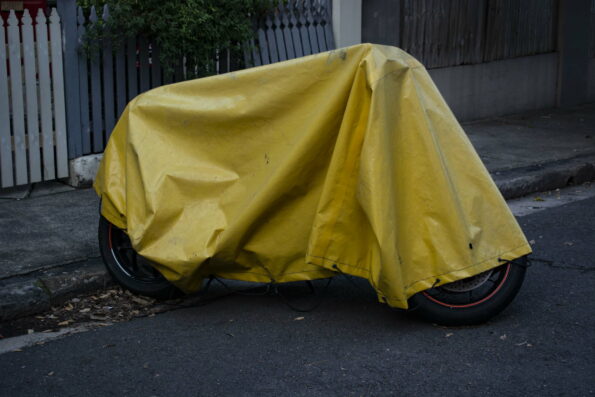A car cover is a plastic cover which helps protect your vehicle from the weather, sun, dust and whatever birds and bats care to leave behind.
A garage is the best solution, a car port is an alternative, but a good fitted car cover can provide an excellent level of protection.
What damage can be done to your car if left uncovered?
Sun: strong sun will degrade your paintwork, fade plastics and your interior and create a huge amount of heat in the car
Rain: rain doesn’t wash your car, it actually leaves it dusty because each rain droplet must form around a dust particle
Hail: a car cover won’t protect much against very large hailstones, but any barrier between a hailstone and your car’s bodywork or glass is better than none at all.
Birds and bats: if you have to park under a tree or overhead cables, you’ll know what a mess roosting birds and bats can make. The acids in the guano eat away at the paint coating, while a cover protects against it
Cats: cats leave claw marks where they jump up to get on your car, seeking warmth from the engine. These are more visible on darker coloured cars.
Frost: having to defrost your window in winter is annoying and you risk cracking the glass. A car cover means no frost.
Dust and dirt: general dust in the atmosphere, plus dirt splashed up from the road, aren’t good for your paintwork because when you wash your car there’s the risk that the dust particles abrade your paint slightly as they are wiped off. That’s why people pay ridiculous amounts to wash ridiculously price cars.
Can you use a car cover outdoors?
There are covers that are only suited to using inside because they are not fully weatherproof, and covers which are suited to using under all the elements. An unsuitable car cover could blow away, or won’t protect the car from the elements.
Indoor car covers won’t offer the UV protection that an outdoor cover will over – they are more like a fitted dust protection option.
Types of car cover




Are car covers convenient?
In a word, no. They are time-consuming to put on a take off, which means they’re not ideal if you’re using them every day. They get dirty, and that dirt can scratch your paintwork. If the cover is wet, you have to deal with it. If you have a cover, where do you leave it when you take it off the car? A good cover should come with a carry bag, but packing away a wet cover is a recipe for growing mould.
Can you damage your car with a car cover?
Yes! You have to be careful putting it on and taking it off because any dirt on the cover can scratch the paint. Only use the recommended tie-down points and methods otherwise you can damage the paintwork.
Better quality car covers have a soft lining to help reduce the risk of damaging the paintwork, as well a reinforced grommets around any straps or bungee holes.
A car cover that’s not the right size can cause damage, which is why it’s advisable to get a cover that’s recommended specifically for your model of car rather than a cheaper ‘universal’ car cover that fits many different models. The one that’s specifically for your car will fit the wing mirrors and will nicely fit the contours of your vehicle.
Cheap car covers cause condensation because they don’t let your car breathe.
When won’t a car cover work?
If you have extensively modified the bodywork of your car with spoilers or aerials, it might be difficult for you to find a cover that fits.
Car covers are difficult to secure – they are easy to steal.
Check whether there are laws in your country about whether a car parked on the road must be displaying licence and registration information (something a car cover is likely to hide)
